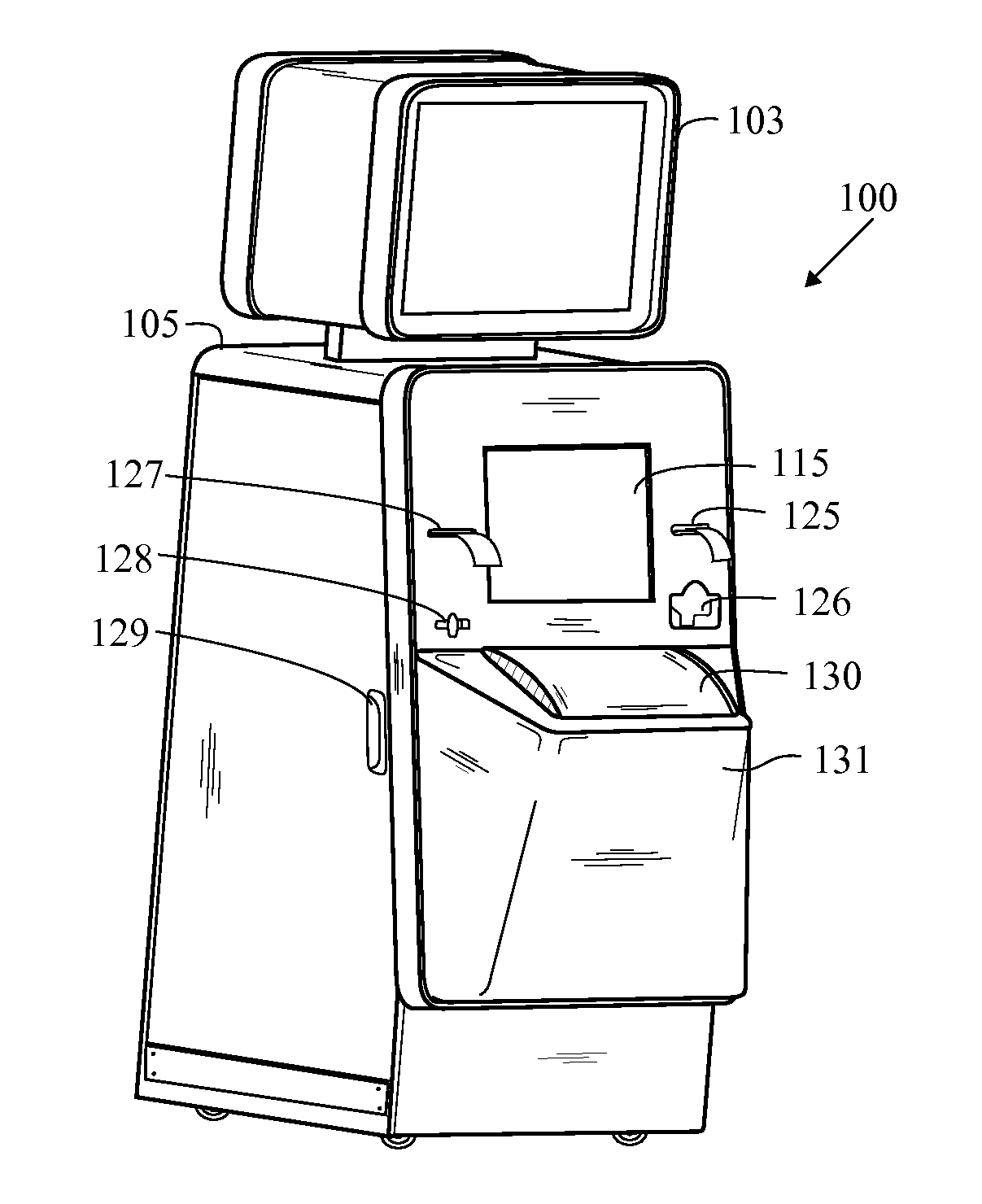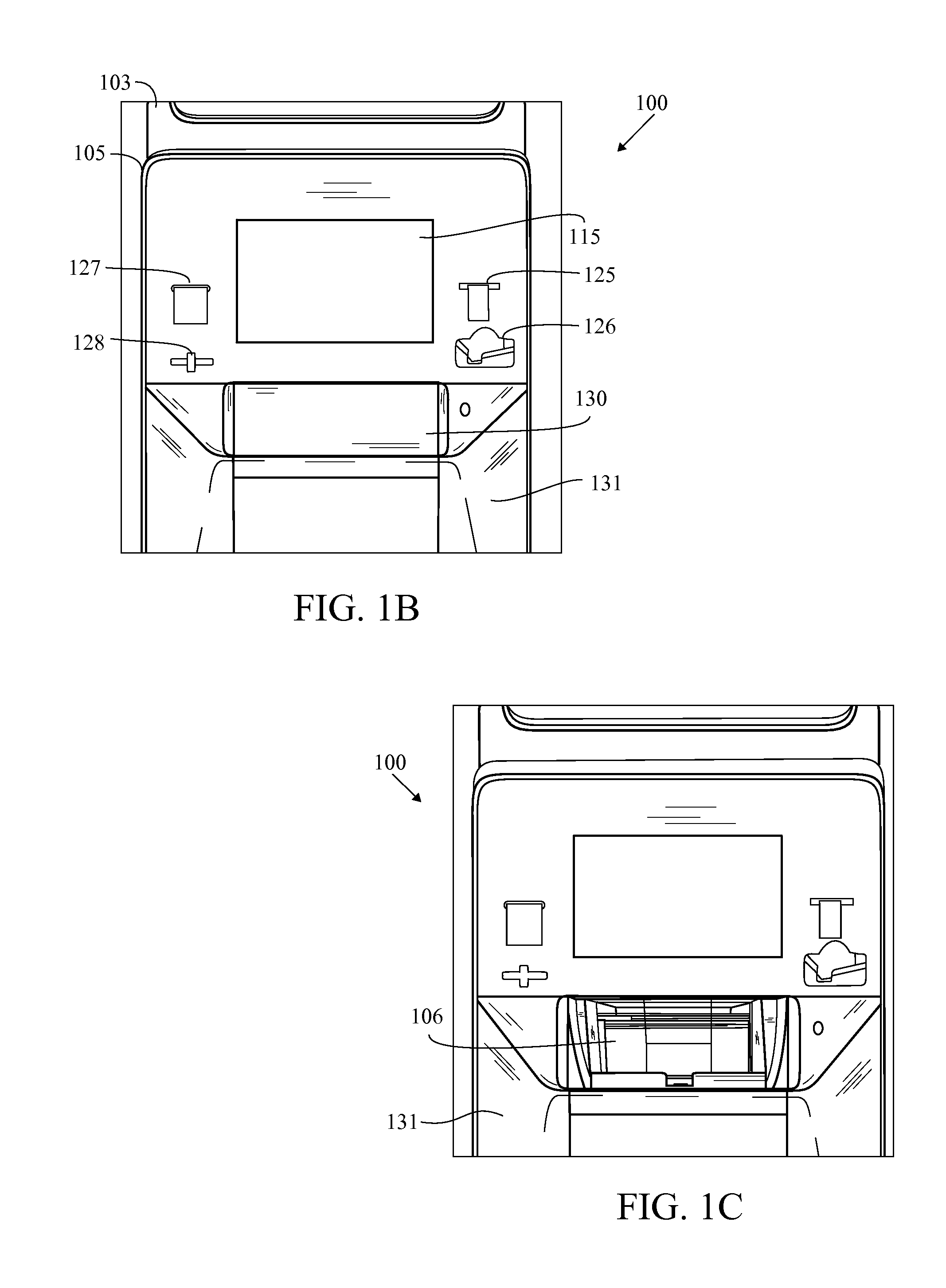Method And Apparatus For Recycling Electronic Devices
a technology for electronic devices and recycling methods, applied in sustainable waste treatment, instruments, marketing, etc., can solve the problems of loss of the opportunity for recycling or re-use by another party, little incentive for a device owner to “do the right thing” with a used device, and inconvenient recycling for owners of electronic devices
- Summary
- Abstract
- Description
- Claims
- Application Information
AI Technical Summary
Benefits of technology
Problems solved by technology
Method used
Image
Examples
Embodiment Construction
[0054]The invention allows for automatic analysis of an electronic device to determine if the device damaged in order to ascertain a value for recycling the electronic device. The automatic analysis is preferably performed utilizing a kiosk or recycling machine. The kiosk has an inspection area with an upper chamber and a lower chamber. Preferably each chamber has a camera. The kiosk also has a transparent plate between the inspection area to allow for viewing the bottom of an electronic device placed on the transparent plate. Each chamber preferably has multiple mirrors to provide multiple views of an electronic device within the inspection area. The mirrors allow for obtaining a multi-dimensional view of an electronic device placed on the transparent plate. Preferably, the mirrors allow for obtaining a 360 degree view of an electronic device placed on a rotatable transparent plate. Preferably, the mirrors allow for determining a height, width and / or length of an electronic device....
PUM
 Login to View More
Login to View More Abstract
Description
Claims
Application Information
 Login to View More
Login to View More - R&D
- Intellectual Property
- Life Sciences
- Materials
- Tech Scout
- Unparalleled Data Quality
- Higher Quality Content
- 60% Fewer Hallucinations
Browse by: Latest US Patents, China's latest patents, Technical Efficacy Thesaurus, Application Domain, Technology Topic, Popular Technical Reports.
© 2025 PatSnap. All rights reserved.Legal|Privacy policy|Modern Slavery Act Transparency Statement|Sitemap|About US| Contact US: help@patsnap.com



